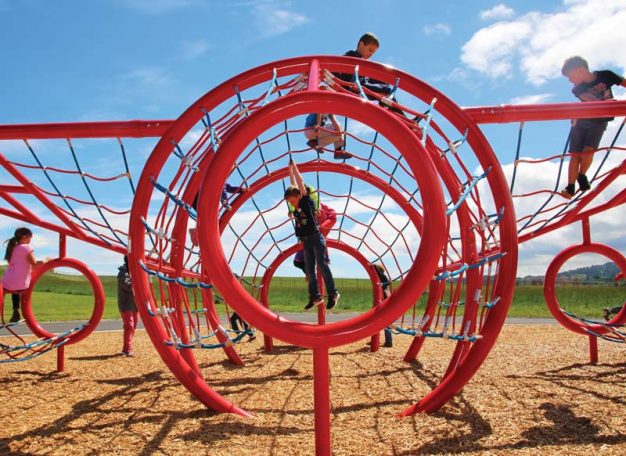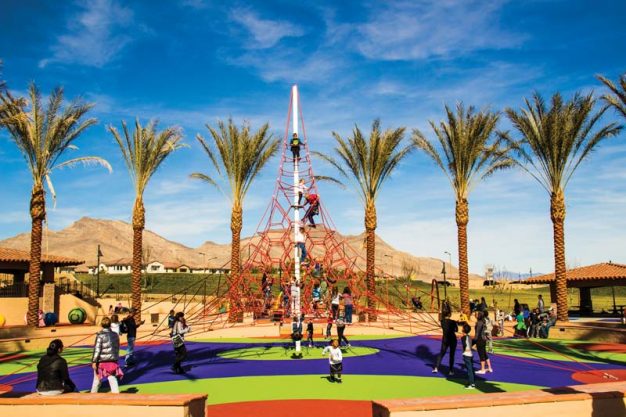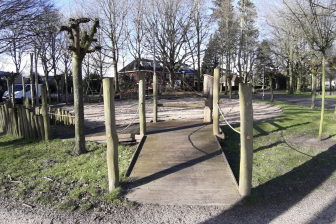
Exploring the latest trends for outdoor play structures
As children grow up, they need many things they wouldn’t consider on their own. They need to face challenges to help them develop social and interactive skills, as well as book smarts and the ability to be creative. These all lead to how they build their sense of self and where they go in life, and it starts in the simplest places.
The playground is one place where almost every kid gets to spend time because it’s an easy place for parents to build a community while their kids have fun. Kids’ interactions at the playground or even in their own backyard are essential for helping them form a solid foundation for their personal growth. To make sure children are learning and developing the right skills at an early age, it’s important to note the latest trends for outdoor play structures. These trends will transform how a child experiences outdoor play and how it moulds their childhood into something they can learn from.
Outdoor tech equipment
The rise of technology has made it easier to introduce children to educational materials, and now tech is expanding into their outdoor playtime. In a world where kids are growing up with technology at every turn, it’s important to incorporate it into the playground to get more interaction.
On average, today’s children get 50 percent less unstructured outdoor play time than kids in the 1970s, so playground technology will help draw them back outside. Interactive games and challenges will encourage them to run around and have fun, inspiring their imagination. Getting outside also decreases the energy and negative emotions that build up after they’ve been cooped up inside all day.
Family play structures
It has always been important for families to get time to spend together, but nowadays it’s more common for both parents to work full-time jobs. Families are typically getting 34 minutes each day to spend time together, likely through family dinners or bedtime routines on the weekdays.
When families can spend time outside together, it benefits everyone for outdoor play equipment to be family-focused. Larger playsets and more settings that introduce games or challenges for kids to complete with their parents will be more popular and prevent parents from having to wait on the sidelines for their kids to get done playing.
Cognitive-focused interactions
Children find themselves surrounded by materials and activities that challenge their cognitive thinking to grow these skills, even before they start their first year of school. Some kids won’t prefer these activities to be on paper or a screen, which is when they’ll look to their outdoor play structures.
Things like interactive sounds or puzzles built into their playground equipment will make kids think while they explore and create. Any structure that has tactile experiences, rotating features, or even water play will ensure hours of fun and learning at the same time.
Covered play structures
When trying to brainstorm what outdoor play structures will benefit kids the most, what you’re looking for might come down to the simple things. A soft foundation they can’t hurt themselves on if they fall down and access to a place of rest like a bench will be good, but what will they need most on a hot, sunny day?
Kids will need shade when they go out to play, as the heat and direct sunlight will cause them to overheat and potentially get sunburns. Shaded park structures will protect parents and children from UV rays while providing a visually appealing play space in any shape or design.

Rope Adventures
Common playground designs will feature things like plastic slides, spinning wheels, and metal swings, but there are other materials kids can benefit from as well. A rising trend is using rope in outdoor play structures to give kids a new setting to interact with and learn from. It’s a material that isn’t common indoors or in toys, so they’ll look forward to playing with it outside.
Whether a play structure has a rope bridge or rope netting, the rope material will allow children of varying abilities to find something fun to do. Rope play increases balance and muscle development, as the kids try to walk, climb or jump around the rope. It’s also a great way to have fun in the highest or lowest temperatures, unlike metal or plastic, which can overheat and cause burns when touched.
Endless climbing walls
Climbing walls are another structure that is gaining popularity in parks, mostly those intended for older children. They present an opportunity to fine-tune problem-solving skills, as kids will learn how to climb them and how to get down. Most communities are looking for rock walls or even boulders to be around 10 feet tall with fall zones, but they can be altered for smaller children as well. Adding a climbing wall up to the top of a slide or to monkey bars will allow young ones to enjoy the experience of climbing without needing to be watched or harnessed.
Every generation is born into a world with new opportunities, which means they’ll all need something a little different while they grow up. The world of outdoor play structures is constantly adapting to these needs, causing trends in the play structure business to evolve. These trends aren’t focused on profitability, but instead how consumer needs can match the current market.
Consider what kids use daily, and what they’ll look for when they go outside to play. Integrating technology and playground equipment will bring their indoor and outdoor worlds together while keeping them under safe and creative shelters. Having equipment that allows parents to play with their kids at the same time, instead of waiting on a nearby bench, is another trend that’s taking off. Anything that pulls parents off the sidelines while encouraging kids to learn and grow is going to be a successful structure in parks and backyards everywhere.





Natural outdoor environments also offer an amazing array of play opportunities which offer challenges and benefits to a child’s physical, cognitive and social emotional well being, encouraging resilience, self regulation, observation, persistence, problem-solving and much more! Check out natureexplore.org and others who provide support for effective natural environments for play and learning!